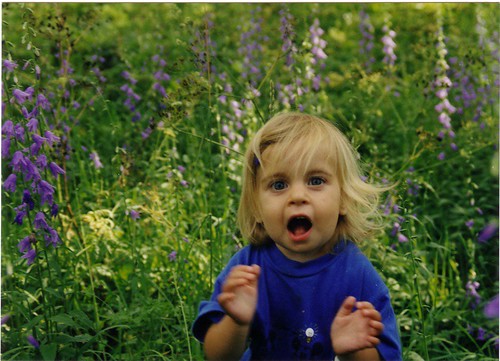Behind the Scents with Tamya Parfum

The first rain in a desert country is something extraordinary. There is a word for it in our language, “Yoreh”. After the dead-dry months of dust and dried straw and broiling sun, the earth responds to the rain gratefully by releasing a haunting aroma and setting free the many seeds that are buried within her. They will sprout as early as the next day, and within a couple of days, the earth is covered with teeny signs of life of many species. The most significant plants, besides the bright green grass against the rich brown soil, are the Autumn Crocuses, aka Sitvanit ha-Yoreh (Sitvanit is from Stav, the Hebrew word for Autumn, and the Yoreh is the first rain). In other words – the Autumn Crocus of the First Rain.
The other species is a type of bluebell, which is called “Rain Bells”. A very modest sibling to the European species, as these flowers are tiny and quite rare. They don’t grow in groups as the European ones do, so one must remember where they emerged in previous years to find them.
After nine months of the best pregnancy I could ever wish for myself (or any other woman), and after 22 hours of labour (which I would happily fast-forward if it was only possible), on October 29th, 1996, at 12:50am, my 9 months and 22 hours odyssey to motherhood had reached its destination, and a beautiful girl took her first breath, which most likely had smelled of a combination of wheat germ oil in a hospital... That very night, the Yoreh had knocked on the roofs of the Western Galilee, and clenched the thirst of the dry earth. Two days later, when we came back home from the hospital, the earth was covered with the spouting grass. My mother and brothers came to visit. The clouds had already cleared (that’s what they do around the Mediterranean), and in the late afternoon and the magic hour just before sunset, the warm Autumnal sun has glowed on our euphoric faces and the little fruit-of-the-womb. We went for a leisurely stroll among the olive orchards and observed the same golden light glowing through the rare petals of Autumn Crocuses and Rain Bluebells with a peaceful feeling of wonderment in our hearts.
In summer 2004, I felt it was time for me to bottle that special magical hour and that magical autumn. I wanted a perfume that would be glowing like the diagonal sunrays just before sunset; I wanted it to be abundantly fruity; I wanted it to be as sweet as a baby’s breath, and tender as the scent of a newborn crown.
I overcame the challenge of the composition by using a few unusual essences to compensate for the limited fruity palette of the Natural Perfumery Organ (guava note was out of the question, unfortunately): The precious oil of Yuzu, an exotic Japanese citron with an intensely fruity, citrusy, bright aroma (reminiscent of grapefruit and Clementine combined, but much better) as the main fruity note along with black currant buds absolute. For the heart, I chose mostly white florals, that all have a hint of fruit and are sparkling and lively: Jasmine Sambac, Hyacinth Absolute, Ylang Ylang and Frangipani. The base is milky and musky, with notes of ambrette, Atlas Cedarwood, Sandalwood and a tad of vanilla. The results were an instant success with the first trial. I had to later on eliminate the hyacinth, as it is a very unusual building block and very difficult to find. However, omitting it did not make a significant difference on the perfume. It still smelled like “Tamya”.
The challenge was with picking the name. I was chasing my tail trying to find nice French or Italian names for “Golden Dusk”, “Fruit of the Womb”, etc. Sometimes, the simplest things just stand in front of us and we stare through them blindly… After a while it dawned on me that I should simply use the name of the muse for this perfume: Tamya. And so it remains to this day.
P.s. Image of Sitvanit originally uploaded by Sibboleth





